Perhaps one of the most interesting crossroads in this frenzied world is the one at which Motorcycles and Art intersect. When Keith Martin of Big D Cycle in Texas shared that he’d just completed restoring an ultra-rare Seeley Condor for renowned abstract painter Larry Poons, we had to learn more. For those not familiar with the name, Big D Cycle is an important one in the history of motorcycles. That’s thanks to Jack Wilson – a man who was involved in one way or another in setting 24 of Triumph’s 36 world speed records. It was Wilson who built the finely tuned Triumph Thunderbird engine in Stormy Manhgam’s streamliner that, in 1956, helped propel Johnny Allen to 214.4 mph across the Bonneville Salt Flats. That record in turn prompted Triumph to name, in 1959, its new twin-carburetor 650 the Bonneville.Where art and motorcycles converge.
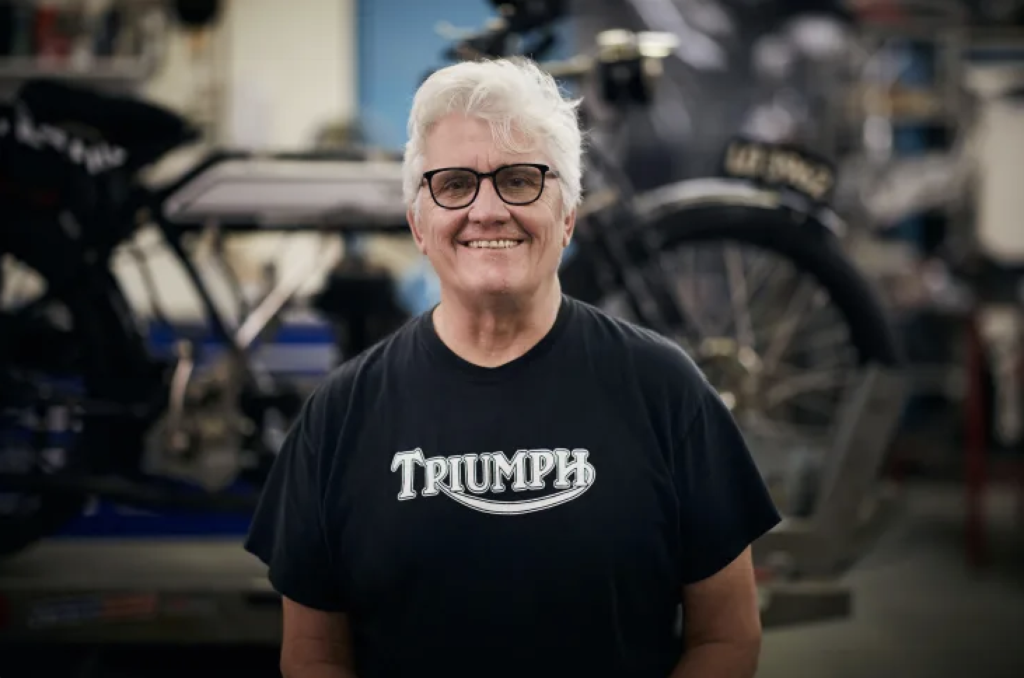
But Big D Cycle never closed. Beginning in the early 1970s, Wilson had wisely been buying up old Triumph dealer inventories. In the mid-1980s, thanks to Big D’s well-respected engine building and restoration capabilities, the shop was busier than ever with customer work, mail-order parts sales, and racing ventures. “I wasn’t really aware of the importance of Big D Cycle back when I first started going there in my teen years,” says Keith, the current steward of the Big D Cycle name. “For me, it was just the closest place to buy Triumph parts.”
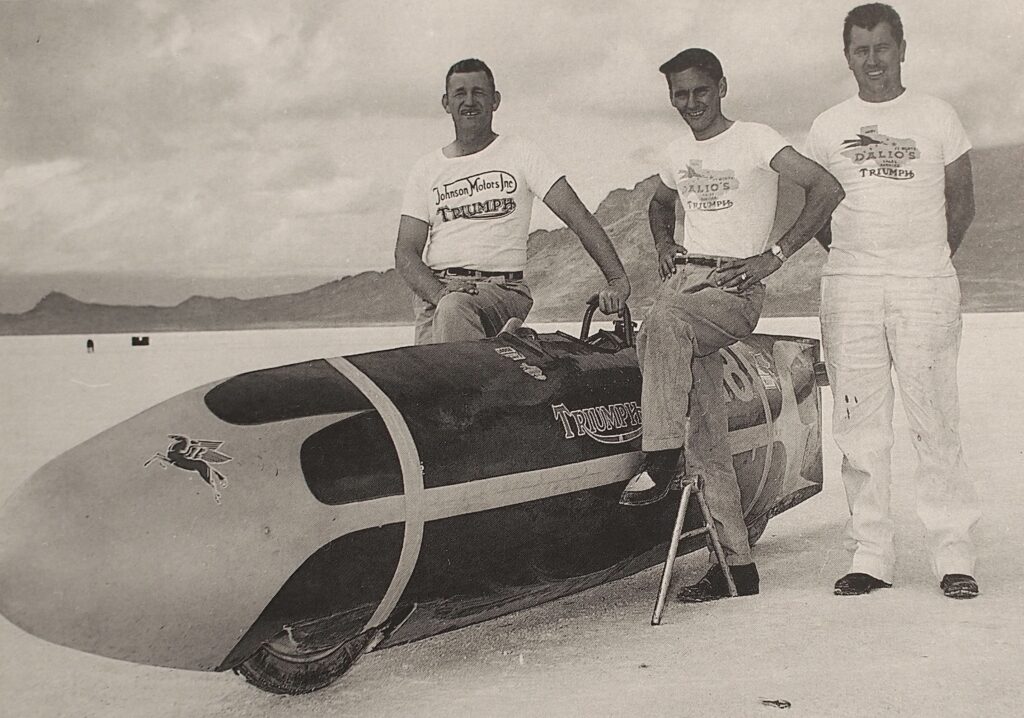
From the minibike, Keith moved up to a 65cc Suzuki. It was a machine his father acquired from a workmate, and the piston was frozen in the bore. His father took the engine apart and Keith watched as a broken wooden shovel handle was employed to drive out the damaged piston. “We drove to a Dallas Suzuki/BSA dealership and they bored the cylinder while we waited,” Keith recalls. Other bigger machines followed, including a Honda 100. It was on this that he’d skip school and ride to Dallas to hang out with his friends at Big D, fooling around in the shop or simply staring at the 1956 record-setting streamliner. Keith didn’t sit around, either. “My father was always big into working, and I got a job when I was quite young in the trades, starting in a manufacturing facility, then at a gas station working on cars. I stayed there until the late 1970s, when I started in the cable TV industry.”
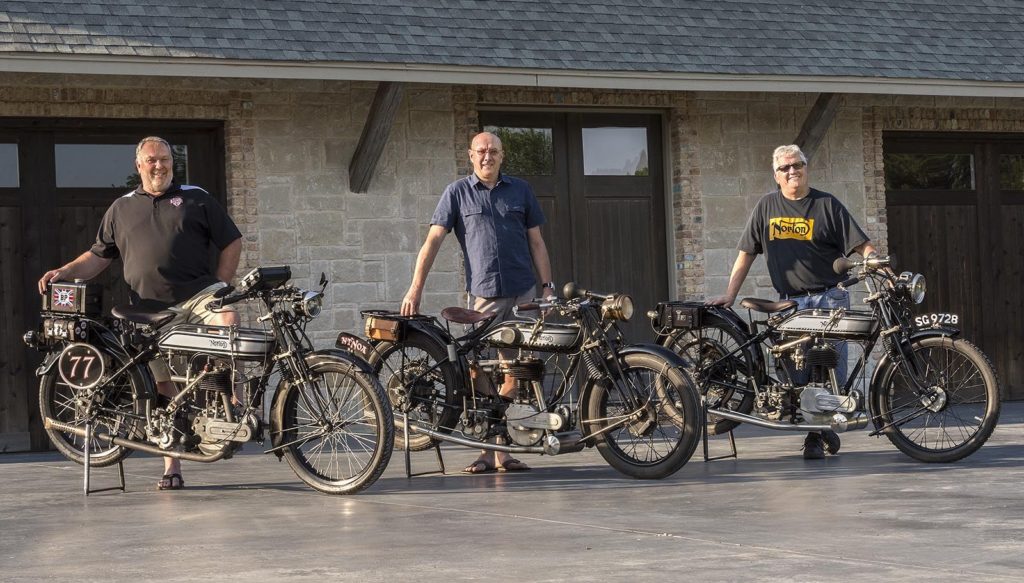
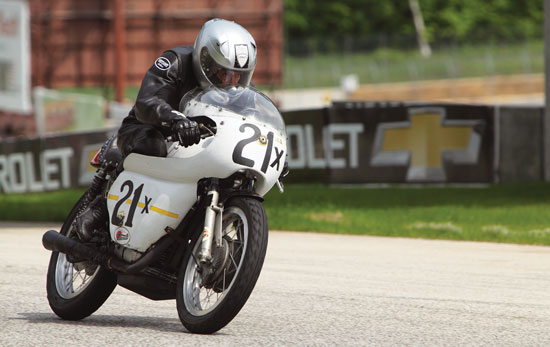
Motorcycle racing was a mainstay in Keith’s life, too, after he and a friend traveled to Daytona in 1987 and took in the vintage racing scene. “I saw them racing 750 Triumphs, and decided to get one of those and get involved in AHRMA (American Historic Racing Motorcycle Association) competition.” That’s how Keith first met New York-based artist Larry Poons. Larry, born in Tokyo in 1937, moved to America and studied music from 1955 to 1957. After taking in an exhibition of work by Barnett Newman, Larry’s focus shifted, and he began studying painting at Boston’s School of the Museum of Fine Arts. He graduated from that program, and in 1963, his work was shown in a solo exhibition at New York’s Green Gallery. He continues to paint in his East Durham, New York studio, while still being an avid motorcycle enthusiast. From the age of 16, Larry’s been riding either British or Italian machines, and in the early 1960s, also played guitar in an avant-garde band called The Druids.
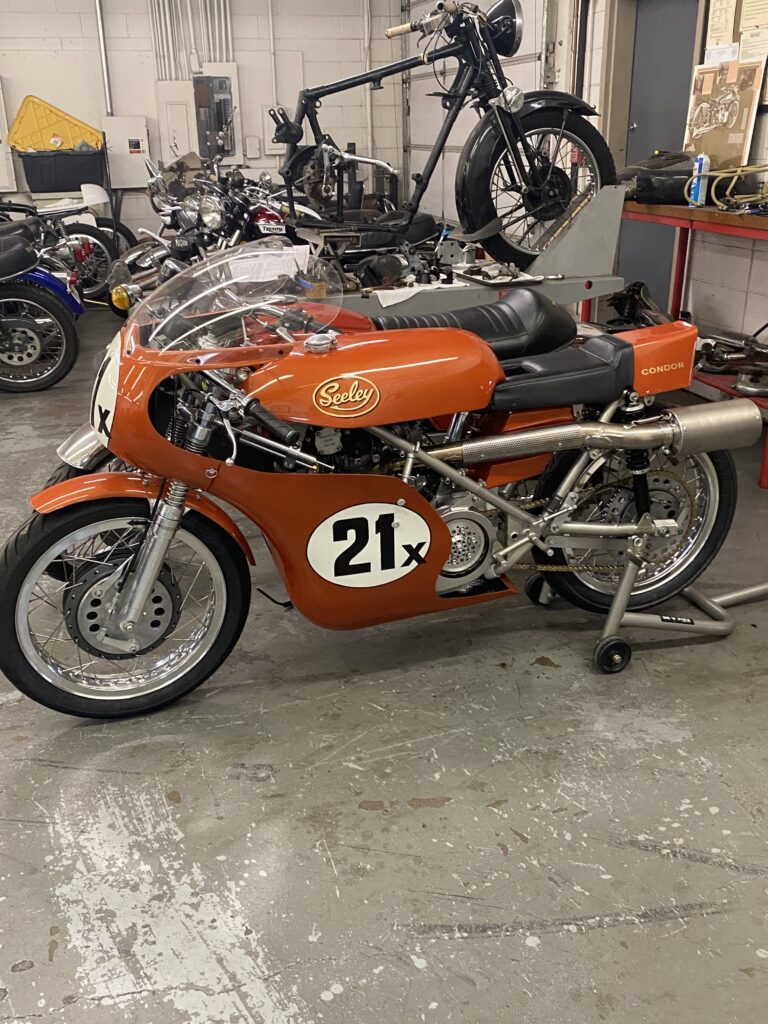
The frame was also used for Yamaha and Ducati competition machines and proved to be a race winner. In the early 1970s, while the big Matchless G50 engine was losing its competitive edge on the tracks, Seeley thought it would be a good idea to put the powerplant in a street-legal machine. He drafted plans for a café-racer style motorcycle, and equipped it with a Lucas dynamo, lights and proper silencer. This became the Condor, a motorcycle with a very small production run of just seven — one of them, of course, was bought by Larry.
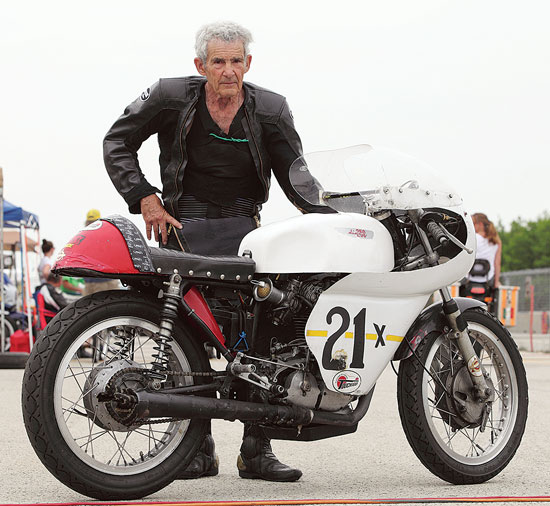
According to Keith, Larry’s Condor was a well-used racing motorcycle when it rolled into the Big D Cycle restoration shop. “It had lived a hard life, and he’d been seriously racing it for 22 years,” he says. “The motor was tired, and after one crash, the frame had been reworked by Rob North. But it was nicely done, and the frame was straight.”
The Big D Cycle crew is Ryan Ambrose and Keith’s long-time friend Scott Aday. They all worked hard on Larry’s Seeley Condor, and fabricated fresh alloy engine mounting plates for a new reproduction Matchless G50 engine sourced from NYC Norton. The gas tank was cut open to repair it, and the exhaust modified to run inside the frame to provide more leg room. To achieve this, the oil tank was cut for clearance while new footpegs were fabricated. Instead of being nickel plated as the original Seeley frame would have been, Keith opted to powder coat the chassis. The gas tank was painted orange, with the Seeley name hand painted on its flanks. It took about 10 months for the restoration to wrap up, and when finished, Keith took it for a quick blast down the street.
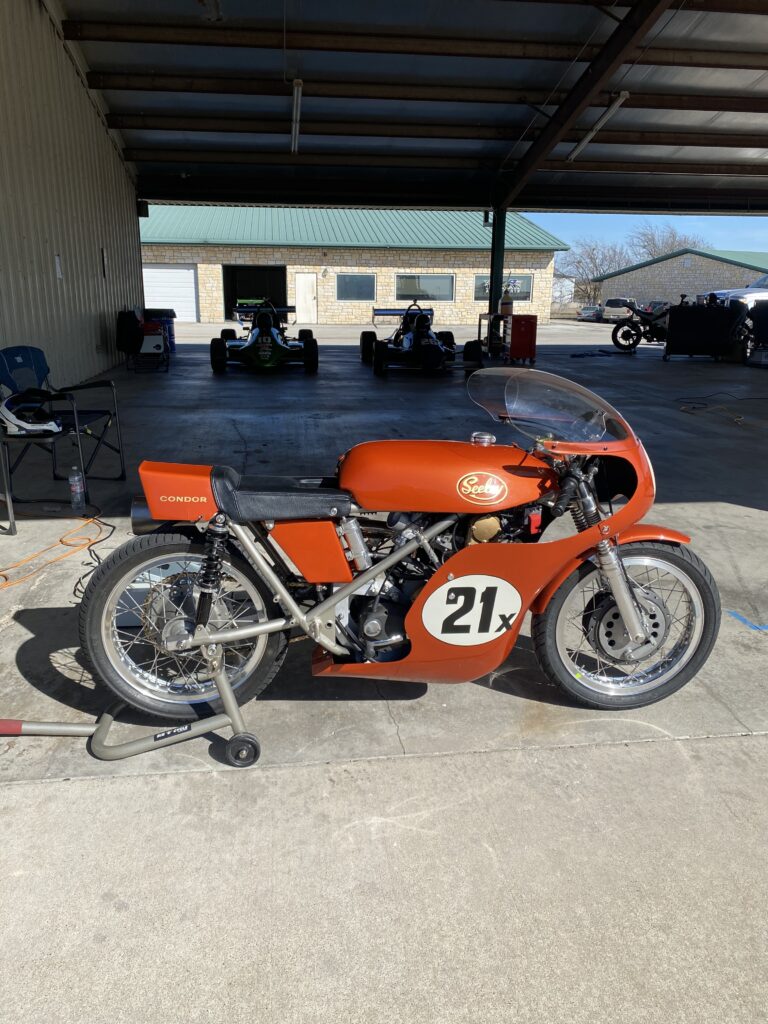
Larry agreed, and sent Keith some books of available works. Keith’s family then met Larry and his wife Paula in their New York studio and selected a painting. So far, the Condor is still with Big D, and the painting is still in New York. The plan was to meet at a track where the Big D Cycle crew could pit for Larry while he put the restored Condor through its paces. Covid might put a wrench in those works, but when it comes to Motorcycles and Art, it won’t be long before everything intersects.
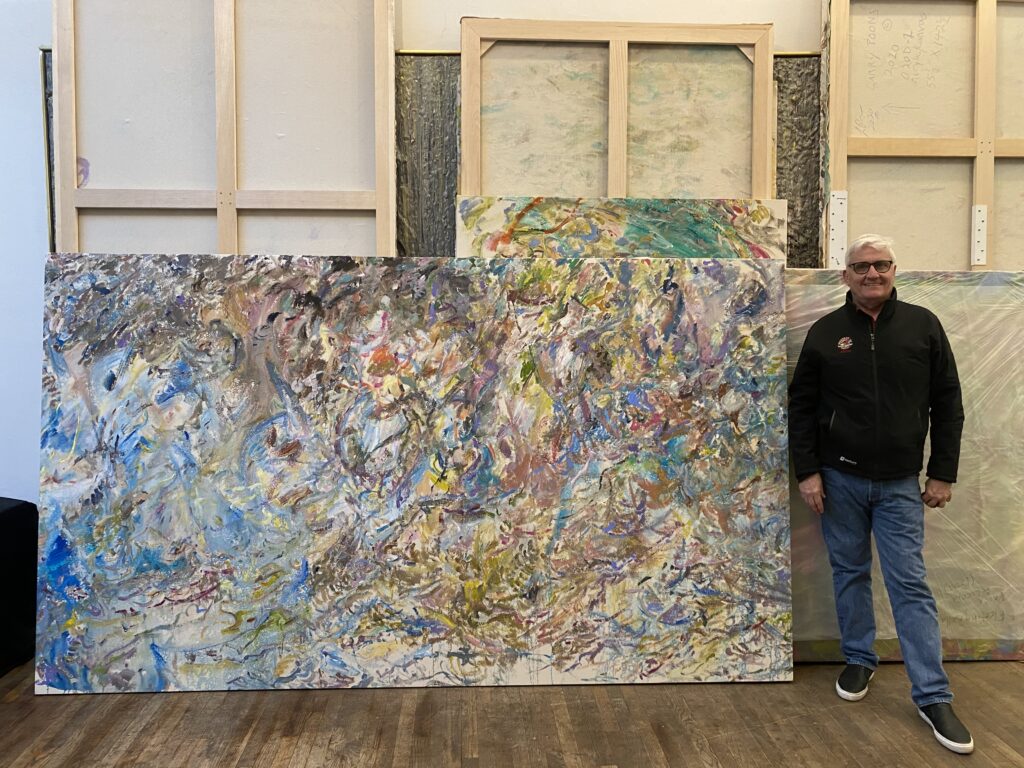
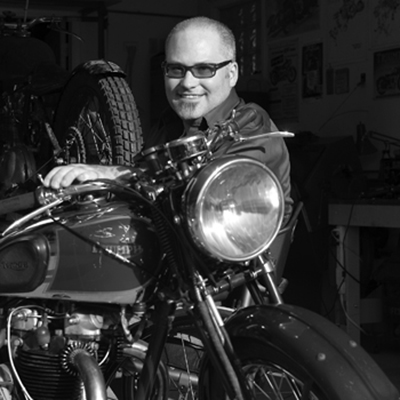

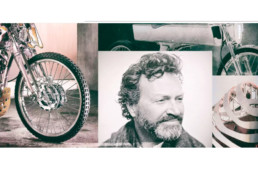
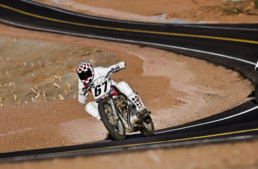
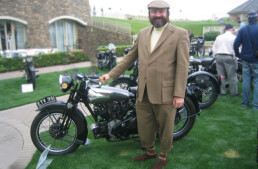
Thank you for another well-crafted piece by Greg Williams! Keith Martin is one of the finest people in motorcycling. Big D is a must-visit any time you’re in Dallas.
I race AHRMA and pitted beside Ryan Ambrose and Keith Martin at Topeka last year. I think the Condor was there as I was a follower of Colin Seeley’s work back in the early 70’s. Yes, Larry still shows up to race at times but I haven’t seen him since Topeka.